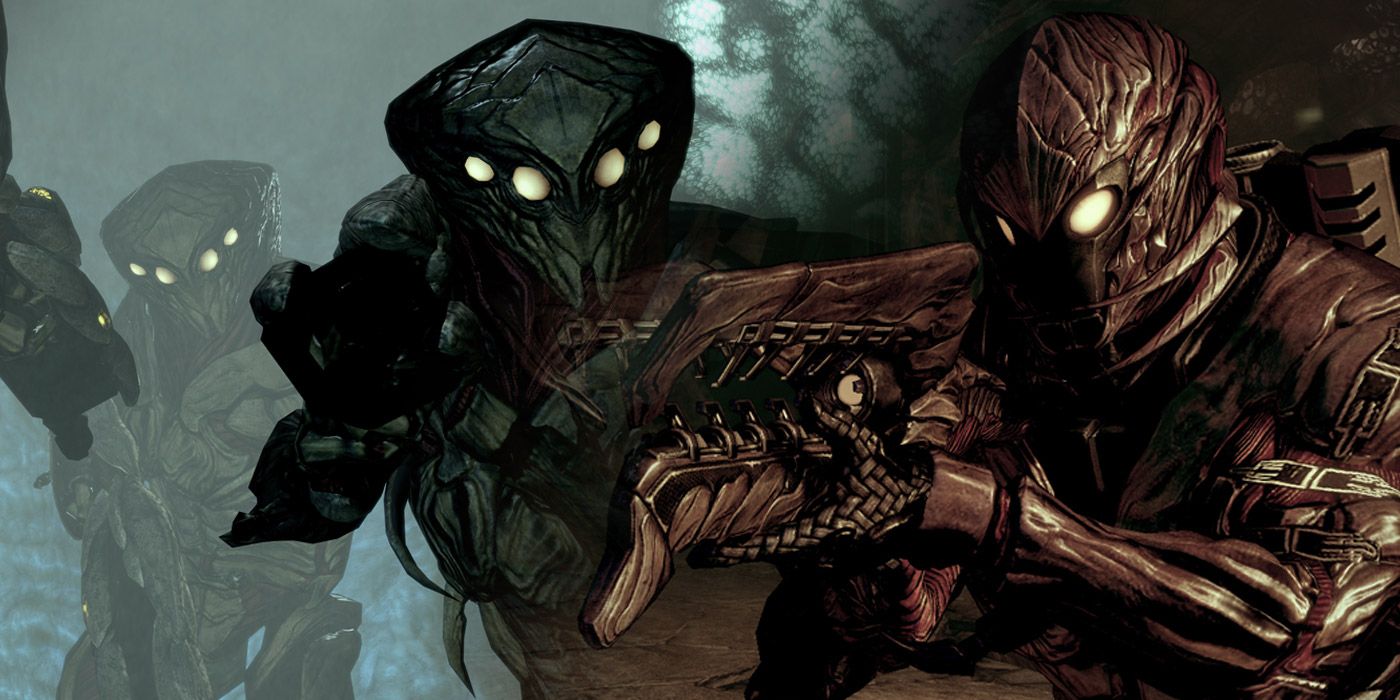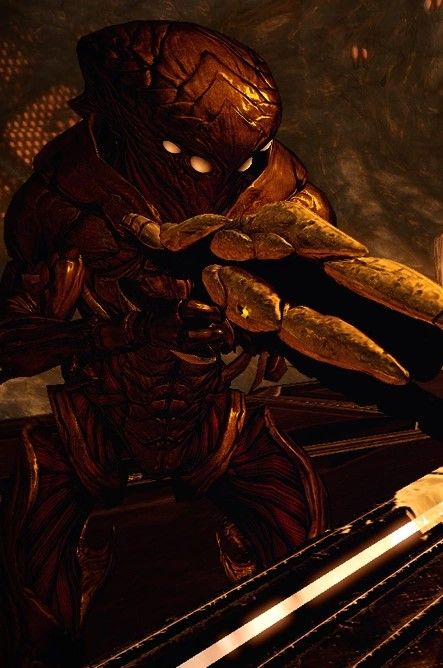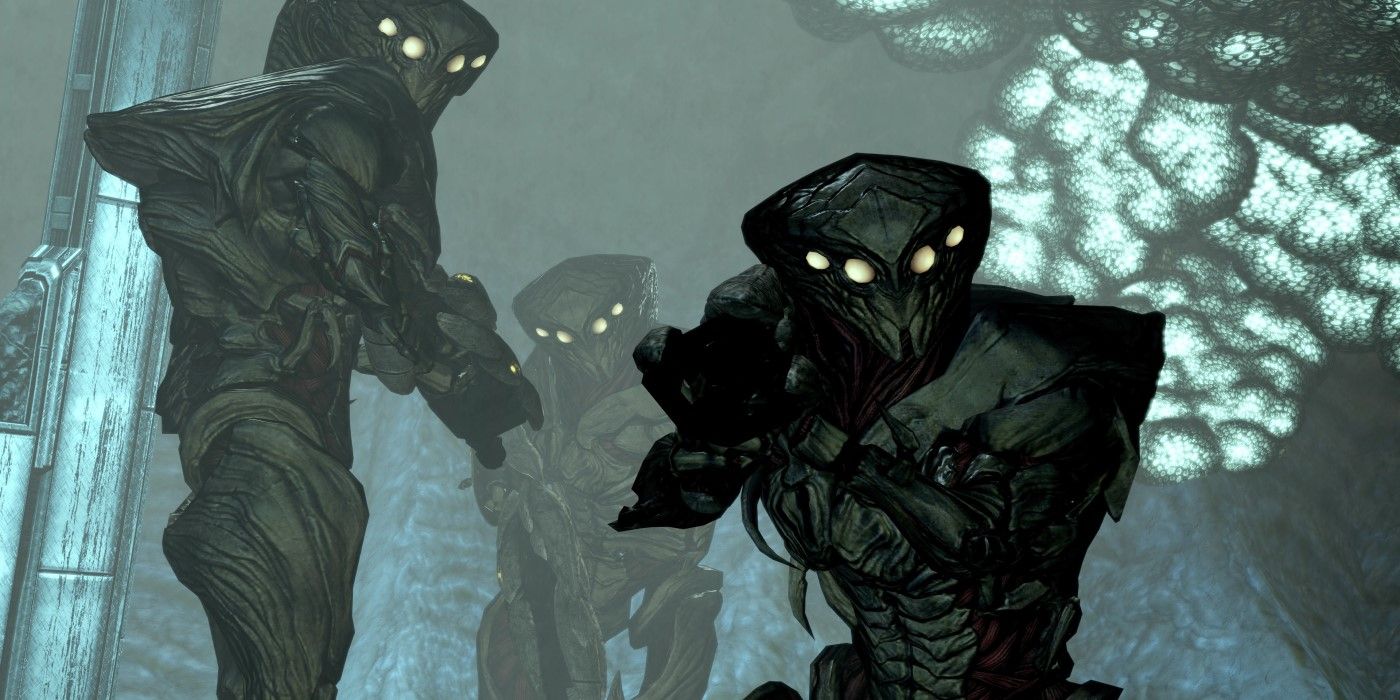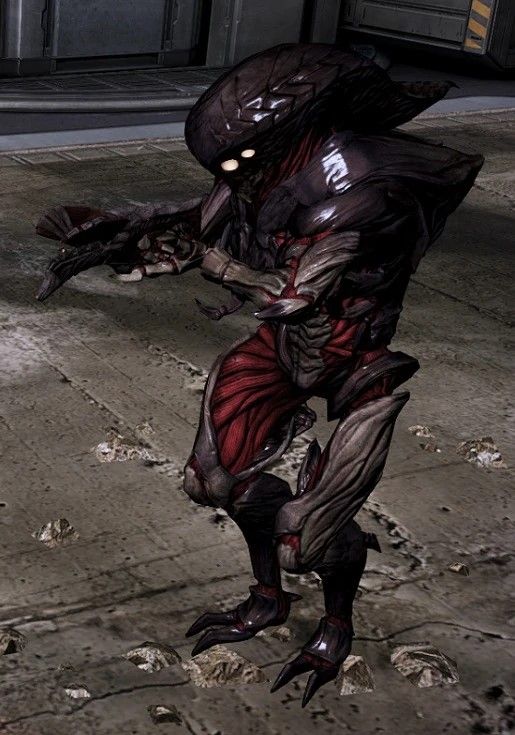Mass Effect's Collector Alien Race Aren't What They Seem To Be

The Mass Effect series has introduced its players to a variety of alien races, whether it was in the original trilogy or the successor Mass Effect: Andromeda. Mass Effect, as a series, is incredibly immersive and builds a world that feels bigger than our own—largely because it is. It encompasses entire galaxies and multiple planets, and the story takes players to every inch of the Milky Way galaxy.
This immersive world would not be built without the multitude of alien races and worlds found in the Mass Effect games. Some races stand out in players’ minds more than others, but one race that’s not to be forgotten is the Collectors. Players will remember Collectors as an enemy in Mass Effect 2, but these formidable adversaries have a history that’s as troublesome as it is interesting.

Though Collectors stand on two legs, they definitely look more insect than human (or even asari or drell.) They have an exoskeleton, four eyes, and a distinct, enormous head. Collectors don’t necessarily have a language of their own and mainly communicate through trills and chirps, but can speak in the language of other alien races if needed.
Collectors live beyond the Omega 4 Relay and are hardly seen in Citadel space. In fact, most citizens of the Citadel thought the Collectors were a myth and not even a real race. However, during the events of Mass Effect 2, Commander Shepard discovers the true biology of the Collectors. They aren’t their own entities, but are rather severely genetically mutated versions of the Protheans—an alien race long thought to be extinct.
It’s later discovered that the Protheans were indoctrinated by the Reapers, then underwent cybernetic modifications to make each Collector more like a clone than an independent being. Collectors seem to no longer have any genders, glands, or digestive systems, as well as a lack of elevated intelligence and self-awareness.

The rise of the Collector alien race happened around the end of the Reapers’ indoctrination and harvesting of the Protheans. After a ton of tests and experimentation on captured Protheans, the Collectors were created. Then, in a cruel twist of fate, the Reapers had the Collectors attack the remaining Protheans who were trying to secure themselves in stasis bunkers on Eden Prime.
After the attack, Javik was the only Prothean to survive. Once the Reapers were satisfied with the wiping out of the Protheans, they retreated to dark space and the Collectors settled beyond the Omega 4 Relay. In the Reaper invasion that Commander Shepard fights against in the Mass Effect trilogy, even more Collectors appear from dark space and beyond Omega 4.

Collectors are known for their strange trade requests, including groups of aliens like left-handed salarians, batarian twins, or even quarians who never left the Flotilla due to illness. Though no one really knows what the captors were used for, odds are they were experimented on in a similar way that the Reapers experimented on the Protheans to create the Collectors. However, instead of creating more Collectors, it seemed the Collectors were focused on creating a Reaper.
Beyond their motives to build a Reaper, the Collectors don’t have much going on in terms of society or culture. They don’t have advanced intelligence or even a sense of self-preservation, so everything they do is only to further their cause. There is no art or flair—only production of a Reaper and building what’s necessary to get there.
Mass Effect: Legendary Edition is remastering the entire original trilogy, complete with all DLC, which means players will get a new and improved look at the Collector alien race.
Mass Effect: Legendary Edition will be available Spring 2021 for PC, PlayStation 4, and Xbox One.

Post a Comment